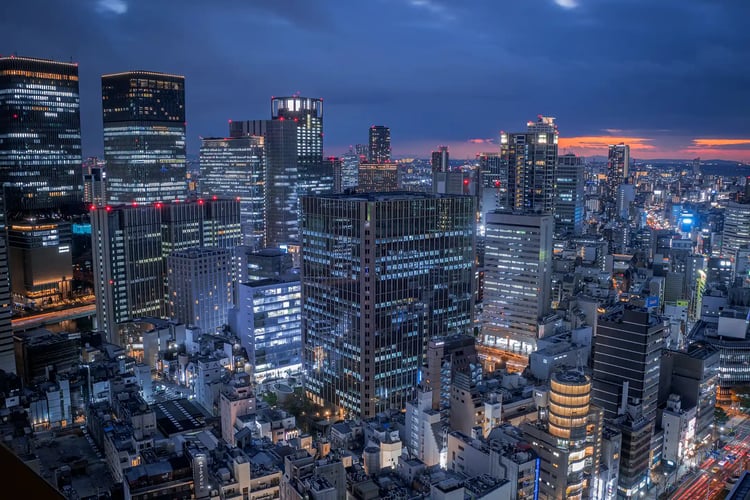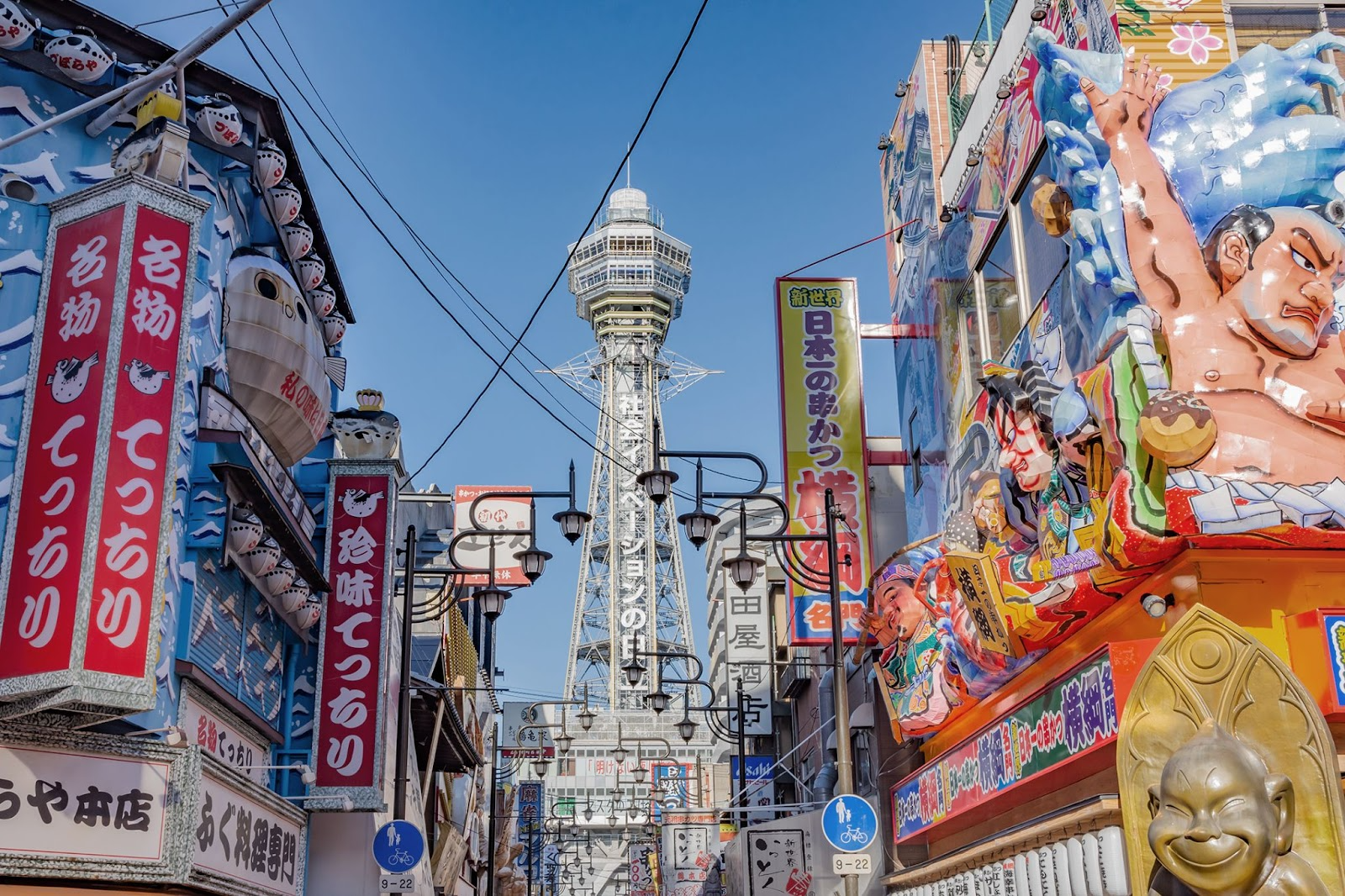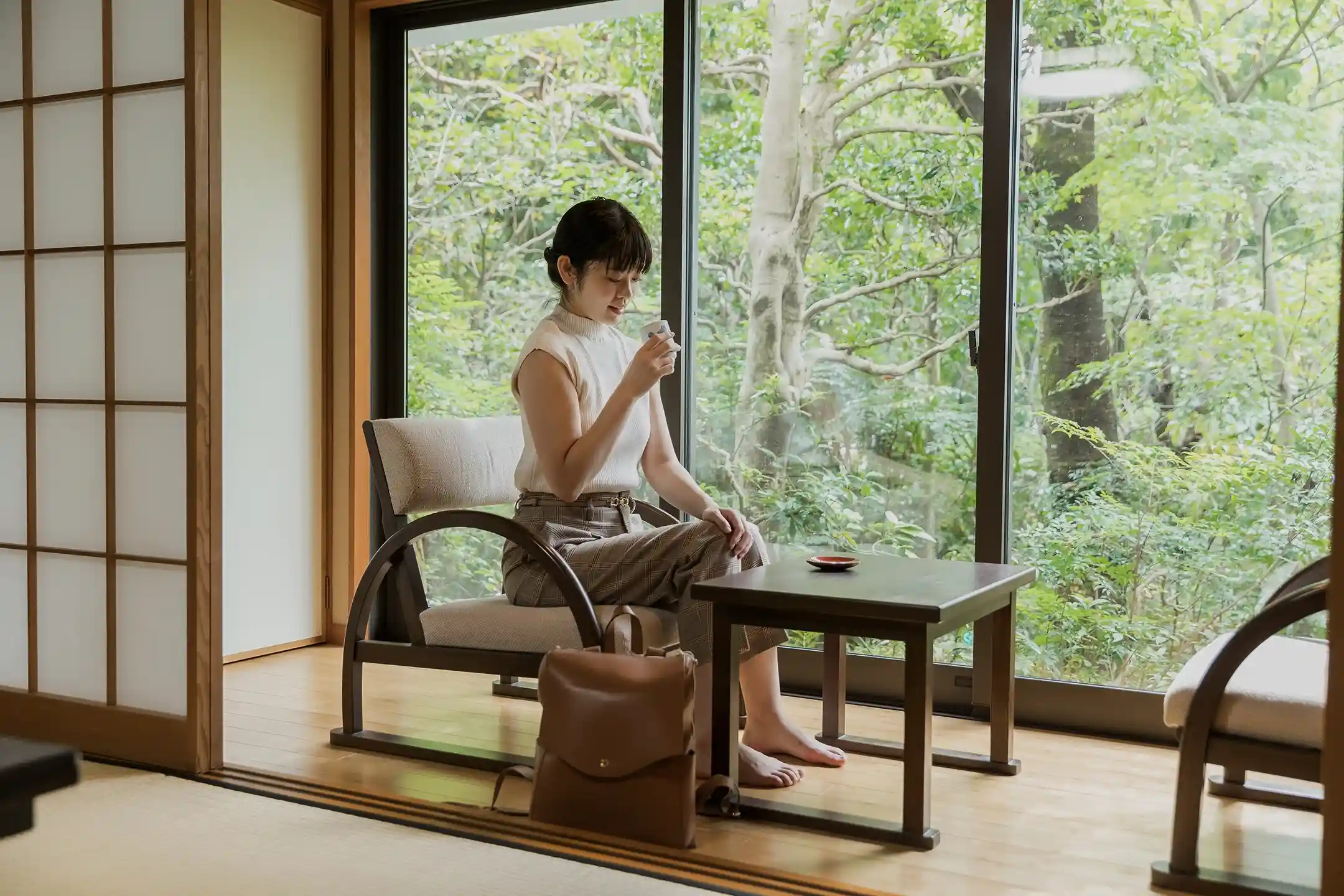
Osaka is packed with charms you can savor together as a family. In this city where urban convenience harmonizes with living traditions, you’ll find a wealth of places and high‑quality services that appeal to every generation (*1).
In this guide, you’ll find practical planning tips for traveling comfortably with children, wellness experiences that reset body and mind, ways to enjoy high‑end stays and dining, smooth mobility hacks, and ideas for sustaining your family’s wellbeing long after the trip.
Blending luxurious touches with a sustainability mindset—and striking a balance between the breeziness of a travel magazine and the depth of cultural insight—this guide helps you design a distinctive family vacation in Osaka.
Why Osaka Is a Top Choice for Family Travel and the Best Seasons
Osaka is a perennial favorite for family trips thanks to its facilities and services that cater to all ages, its compact, well‑organized urban functions, and a calendar of pleasant weather and engaging events. Spring and autumn, in particular, offer mild conditions with average temperatures around 20°C, making them the best seasons for sightseeing (*2).
Below, you’ll explore compact, easy‑to‑enjoy activities, neighborhoods that balance calm and verve, and the latest trends in sustainable urban development.
Activities Within Easy Walking Distance
Across central Osaka, family‑friendly attractions are clustered so you can cover more with short walks or quick hops between spots.
For example, Osaka Bay is home to the Osaka Aquarium Kaiyukan—one of the largest in Japan—and Universal Studios Japan (USJ), set close together so you can spend a full day moving from encounters with marine life to rides that bring movies to life—fun for kids and grown‑ups alike (*3).
Around Osaka Castle Park, you can pair hands‑on history learning with seasonal nature walks, while the Shinsaibashi–Dotonbori area ranges from traditional ningyō jōruri (bunraku) puppet theater to cutting‑edge shopping. Curated model courses by area make it easy to pack a variety of experiences into even a short itinerary.
.webp?width=750&height=500&name=TEN-SHIBA%20(Tennoji%20Park%20Entrance%20Area).webp)
A Cityscape Where Calm and Energy Coexist
Osaka’s streets offer a thoughtful balance of serene spaces and lively quarters. Nicknamed the “city of water,” Osaka has riverside promenades and parks woven through the center. At daybreak, you’ll often see locals practicing yoga or enjoying a jog along the water.
After a quiet moment amid trees and riverside views, dive into the buzz of arcades and markets. In long‑loved shopping streets, warm exchanges with greengrocers or deli owners add a human touch—and give your children a vivid window into local culture and the rhythms of daily life.
This dance of stillness and motion in everyday Osaka becomes the kind of scene your family will remember.
The Latest Trends in Sustainable Urban Development
In recent years, Osaka has doubled down on environmentally conscious citymaking. Electric and next‑generation buses connected to major events are being introduced step by step; on select routes, quiet electric buses already run, reducing noise and exhaust and making the ride gentler for families (*4).
For visitors, “decarbonized tours” encourage low‑emission transport and eco‑friendly stays, along with programs that highlight local ingredients and food‑waste reduction—so you can learn about sustainability while having fun (*5).
Inspired by Kamikatsu in Tokushima—the first town in the world to declare a Zero‑Waste policy—properties around Osaka are gaining attention for waste‑free operations and interiors that incorporate recycled materials (*6).
By engaging with Osaka’s forward‑looking sustainability efforts, your family adds fresh learning and value to the journey.
Stress‑Free Access and Getting Around the City
Despite being a major metropolis, moving around Osaka is comparatively stress‑free. From the gateways of Shin‑Osaka Station for the shinkansen, Kansai International Airport, and Osaka International Airport (Itami), access to the city center is excellent. Services are designed so you can move smoothly even with a stroller or extra luggage.
Leverage family‑friendly transit passes, luggage storage at stations and attractions, and stroller‑rental options to lighten the load. This section walks you through smart ways to use public transit in Osaka, when to choose taxis or ride‑hailing, and how to make the most of luggage and stroller services.

Choosing Public Transit and City Passes
Within Osaka, you can tap an extensive network of Osaka Metro lines, JR lines, private railways, and city buses.
Rail covers most major sights. If you avoid rush hours (weekdays 7:00–9:00 and 17:00–19:00), boarding with a stroller is easier. Osaka Metro stations maintain barrier‑free routes with elevators, creating a user‑friendly environment for stroller and wheelchair users (*1).
On fares, up to two children below elementary school age ride free per paying adult on Osaka Metro and City Bus (*2)—a welcome perk for families with little ones. For savings, the “Enjoy Eco Card” offers unlimited rides on Osaka Metro and buses for a day plus discounts at attractions; children can use it for just ¥310 per day (*3).
Tourist passes such as the Osaka Amazing Pass add unlimited rail rides and free admission to key attractions, while the Osaka e‑Pass focuses on attraction admissions—both efficient options for city sightseeing on a family vacation in Osaka (*3).
Taxis, Ride‑Hailing & EV Sharing
When you’re juggling luggage or traveling with small children and transfers feel daunting, use taxis or ride‑hailing wisely. In Osaka, Universal Design (UD) taxis that allow you to board with a stroller or wheelchair without folding are widespread.
With the GO taxi app, you can hail a cab to your location and pay cash‑free—helpful for international visitors. A new initiative near JR Osaka Station is piloting EV car‑sharing; combining rail with EV share promises nimble, lower‑impact mobility around town (*4). Mix and match transport to suit each situation, and getting around Osaka with kids becomes both comfortable and flexible.

Luggage Storage & Stroller Rentals
Sightseeing with large bags can wear families out, but Osaka’s major stations and attractions offer plentiful coin lockers and left‑luggage services. For example, the “Luggage Station” inside Shin‑Osaka Station not only stores bags but also rents strollers and wheelchairs—so you can drop your luggage and head straight out to explore (*5).
Most hotels will hold your bags before check‑in and after check‑out, so keep your hands free. Japan’s hallmark courier services are another option: companies like Yamato Transport will ship your luggage to your next hotel, the airport, or your home at reasonable rates, greatly easing transfers (*6).
With these services, even long days of walking and stroller‑friendly routes feel manageable and safe.
Three Wellness Experiences That Welcome Kids
In Osaka, wellness isn’t just for adults—you can enjoy it together. Yoga and Zen programs are thoughtfully adapted so kids stay curious while everyone relaxes.
Here are three recommended wellness experiences for parents and children. Each offers short formats and English‑speaking instructors, making them approachable for first‑timers and families visiting from abroad.
Early‑Morning Riverside Yoga & Kids’ Yoga
In the clear morning air, riverside yoga along the Ōkawa or Yodogawa greenbelts is a uniquely refreshing Osaka experience.
Practicing under open skies to the sound of flowing water is deeply calming, and many programs welcome parent‑child participation. In fact, some outdoor yoga classes in Osaka are open to all ages, with select sessions allowing children of elementary‑school age and younger to join for free (*1).
Experienced instructors guide breathing and foundational poses gently, so even parents new to yoga feel at ease. Some classes offer instruction in English, which families from overseas and children at international schools appreciate.
Syncing your breath together and stretching into the sunrise is one of the best ways to reset for the day.

Zazen Meditation and Sutra Copying at a Zen Temple
In Osaka City and nearby areas, you’ll find programs that let families experience the spirit of Zen. At one temple, while zazen may be challenging for preschoolers or younger elementary students, children who are genuinely eager to try are welcome—some families join a Sunday‑morning zazen session together (*2).
Beginners receive 10–20 minutes of instruction from a priest on sitting and posture, followed by around 20 minutes of quiet sitting. It’s not an endurance test; think of it as accessible time to settle your mind (*3). If a child gets restless, leaving partway is fine—the atmosphere is supportive for families with little ones.
Afterwards, the abbot often offers a short talk and tea, giving you a meaningful moment to share reflections as a family.
The same temple also hosts an approachable shakyō (sutra‑copying) class. With loaner brush pens and chair seating, even children and beginners can take part. You’re welcome to copy only a portion—regardless of handwriting skill (*4).
Even a short period of quietly writing together builds focus—and gives everyone a welcome break from screens.

Aroma Spa and Parent‑Child Aroma Crafts
When you’re ready to unwind, spa time is a wonderful reset. Luxury hotel spas in Osaka are known for treatments using organic essential oils; wrapped in gentle scents, you can release travel fatigue.
Beyond adult‑oriented menus, some venues offer workshops for children. At parent‑child aromatherapy schools, you can make simple aroma sprays, bath bombs, and creams together (*5). For small children, the activity is done alongside a guardian, with the instructor keeping a caring eye.
Blending plant‑derived scents like a hands‑on science project excites the senses. Use your handmade bath bomb that evening back at the hotel, and you’ll anchor both relaxation and a fond memory.
Scent‑themed parent‑child time brings the best of soothing and learning into your trip.
Sustainable—and Delicious—Food Experiences for Families
Nicknamed the city where you “eat till you drop,” Osaka offers extraordinary variety, and in recent years more dining experiences integrate sustainability.
Think restaurants championing local‑for‑local sourcing and cafés committed to cutting food waste—plenty of ways for your family to enjoy meals that are both delicious and gentle on the planet.
From lunch cruises that glide along the river to café “stamp rallies” that spotlight desserts made with upcycled ingredients, food here blends learning with joy. Below are three family‑friendly, sustainability‑minded ideas.
Farm‑to‑Table Buffet
A farm‑to‑table buffet showcasing Osaka’s seasonal produce and traditional fermented foods is a treat for all ages—and doubles as tasty food education.
Some city hotels partner with local farmers to present vibrant, seasonal dishes featuring Osaka‑grown ingredients.
At Hotel Plaza Osaka, for instance, the team has hosted children’s food‑education seminars that introduce local ingredients through quizzes, followed by full‑course meals featuring Osaka‑raised duck and branded beef like “Naniwa Kuro‑Ushi” (*1).
Learning about local food together while enjoying an abundant spread deepens your trip memories. Spotlight fermented favorites—miso, soy sauce, pickles—as a gateway to the depth of Japanese culinary culture for your kids.
Organic Lunch on an Electric Boat
A river cruise offers a peaceful escape from the city’s bustle, with skyline views from the water as you dine.
Latest‑generation EV boats glide with minimal vibration and engine noise, so your family can relax and chat while taking in the scenery (*2).
Electric boats avoid exhaust smells, keeping even small children comfortable. Some plans serve lunch courses and sweets onboard; others pair Western cuisine, kaiseki, or BBQ with specific vessel types (*3). Seasonal menus—like autumn matsutake or eel—are especially popular. Food tastes even better when the view flows by.
Beyond dining, certain boats offer karaoke, custom BGM, or even live music by arrangement. With a bit of advance planning, the sense of occasion on the water makes for the kind of experience kids can’t stop talking about.

Café Hopping with Upcycled Ingredients
For a playful spin on environmental learning, try a café crawl that celebrates upcycling. In Osaka, you’ll find cafés that transform ingredients likely to go to waste into inventive, delicious menus.
One café, for example, repurposes surplus multigrain rice into craft‑beer mash and serves it as a limited local brew (*4). Another new hub—the “SMASELL Sustainable Commune”—features a café that enthusiastically uses items like lesser‑known cuts from older cattle and non‑standard fish sizes, turning “what a waste” into “what a delight” (*5).
Make it a stamp‑rally adventure with dessert at each stop—kids learn by doing, and everyone gets a sweet reward. Ask staff about the upcycled ingredients at each café and trade impressions as a family; your trip becomes a catalyst for raising eco‑awareness together.
When you complete your stamps, toast the achievement with your favorite upcycled sweet.
Stay Options That Prioritize Quality and Privacy
Where you stay shapes the whole trip. Osaka offers a wide range of properties that combine luxury amenities and attentive service with a sense of privacy.
Choose what fits your needs—from connecting suites in urban hotels to villas with natural materials and private outdoor baths, to serviced apartments ideal for longer stays. Below, we compare three types: an urban luxury hotel, a riverside hideaway villa, and an eco‑minded serviced apartment.
Urban Luxury Hotel (Connecting Suites)
High‑end hotels in central Osaka offer plentiful connecting rooms and suites that give families room to breathe.
A popular layout connects two high‑floor suites with an interior door—so grandparents through grandchildren share proximity while still keeping personal space.
In the Tennōji area, Hoshino Resorts OMO7 Osaka, for instance, offers a special suite for up to six guests, with a large dining table and a living room featuring a wall‑size Osaka sightseeing map designed to spark family conversation (*1).
Interiors incorporate fine wood and washi wallcoverings; the beige‑and‑white palette evokes a calm reminiscent of Zen—even in the heart of the city.
Some hotels go further with 24‑hour “kids’ concierge” support, from warming milk to advising on nearby baby‑goods shops. Urban access plus services that help every generation relax make for a reassuring stay.

Riverside Hideaway Villa (All Rooms with Open‑Air Bath)
On the outskirts of Osaka and in neighboring areas, riverside private villas immerse you in nature. With open‑air baths in every unit, your family can soak together without worrying about the surroundings.
At night, unwind to the river’s murmur and the chorus of insects—there’s nothing like a hot soak to ease a full day of exploring. Many villas feature wood decks; in the early morning, sit with birdsong, meditate, or stretch as if you were at home.
A short step away from the urban core unlocks quiet and privacy, elevating your family trip into truly restorative time.
Eco‑Conscious Serviced Apartment (For Longer Stays)
If you’d like to stay longer or “live” a little while you travel, consider a serviced apartment. In Osaka, you’ll find spacious rooms with kitchenettes plus housekeeping and concierge services—ideal for extended stays.
Properties with an eye to the SDGs are on the rise. Guest linens often use natural materials such as organic cotton and linen, and single‑use plastics are minimized as part of broader sustainability policies.
Some partner with local organic markets to deliver seasonal vegetable boxes, and host fermentation classes in an on‑site kitchen studio—so you can enjoy a healthy, eco‑friendly rhythm during your stay.
Notably, in March 2023, Imperial Hotel (Osaka/Tokyo/Kamikōchi) became the first in Japan to receive the top ★5 rating from “Sakura Quality An ESG Practice,” advancing initiatives that combine safety, comfort, and environmental stewardship (*2).
With the ease of home and the convenience of a hotel—plus opportunities to learn and live more lightly—eco‑minded serviced apartments are an inspired choice for family travel.
Wellbeing Habits That Carry On After the Trip
Keep the spirit of your journey alive back home by weaving insights and routines from Osaka into daily life. Breathing techniques, the basics of fermented foods, and ideas for living more sustainably will continue to enrich your family’s days.
Here are three actions you can take based on your Osaka experiences. Each is easy to start online or with simple tweaks at home—perfect for sustaining memories and momentum together.
An Osaka‑Inspired Morning Breathing Routine
Bring the refreshment of riverside or park yoga into your mornings. Adapt the breathing you learned in Osaka: for five minutes after waking, meet in a park, garden, or by an open window for deep breaths and light stretches as a family.
The key is to imagine “Osaka’s blue sky and river breeze.” As you inhale, picture fresh air energizing your whole body; as you exhale, let drowsiness and stress go. Try diaphragmatic breathing from your yoga session with the kids—“my tummy’s like a balloon!” might become a playful cue.
Just a few minutes each day supports your nervous system and sets a positive tone. Let your Osaka routine become your family’s morning spark.
Online Miso‑Making Community
If savoring miso soup and other washoku dishes was a highlight, try preparing miso at home. Today, online communities guide miso‑making step by step, with fermentation experts offering monthly live sessions (*1).
Order a miso kit in advance, then prep alongside instructors and fellow participants on screen—asking questions as you go.
In 2025, for example, knife maker Kai Corporation hosted an online miso‑making event with a “miso explorer” as guest, giving beginners the confidence to succeed from their own kitchens (*2). Joining as a family deepens interest in fermented foods, and once your miso is ready, you can recreate the comforting bowl you enjoyed on the trip.
Communities often share recipes and fermentation tips, keeping learning—and conversations at home—flowing.
Next Sustainable Destinations Across Japan
After experiencing Osaka’s sustainability initiatives, you may want to apply the same lens to future trips. Fortunately, Japan offers many eco‑tourism regions rich in family‑friendly learning. As you plan, consider estimating the carbon footprint of your transport and lodging.
Osaka has piloted tools that visualize CO₂ emissions by itinerary to build awareness (*3). Following that lead, choose trains over planes or cars when feasible, and select accommodations with environmental certifications to design a lower‑impact trip.
Ideas for where to go next: Kamikatsu in Tokushima, known for its Zero‑Waste declaration; Nagano for immersive forest therapy; and the Hida region of Gifu, where communities advance renewable energy.
Stay at a zero‑waste‑focused hotel in Kamikatsu, join a guided forest‑bathing tour in Nagano, or take an eco‑themed town walk in Hida—each region offers engaging, sustainable options for families.
Carry forward Osaka’s “learn while enjoying” mindset, and let each new destination add to a future that’s both sustainable and joyfully shared.
Ending: What Family Travel Can Bring
This wellness‑and‑luxury family guide to Osaka has taken you through planning, mobility, experiences, dining, lodging, and life after the trip—with one throughline: enriching the body and mind of everyone in the family.
Osaka’s rare blend of urban energy and restorative calm offers time and learning that bridge generations. For children, it sparks curiosity about a wider world; for parents, it brings smiles and personal renewal; for grandparents, it offers comfort and discovery through modern services and enduring cultural touchpoints.
Let the circle of wellbeing continue at home, seeded by this journey. May your family vacation in Osaka set the tone for your next destination, where sustainable, happiness‑filled adventures await. If you’re ready for a safe, comfortable trip layered with meaningful learning, Osaka is a brilliant place to begin.
Author Bio

Maoko Shibuya
Content Planner & Writer Holding a master’s in Digital Marketing and experience across global markets, Maoko blends international perspective with a deep appreciation for Japan’s cultural heritage. She plans and writes compelling narratives that reveal the country’s beauty and depth, drawing on her passion for travel, local cuisine, and cultural exploration.



.webp)

